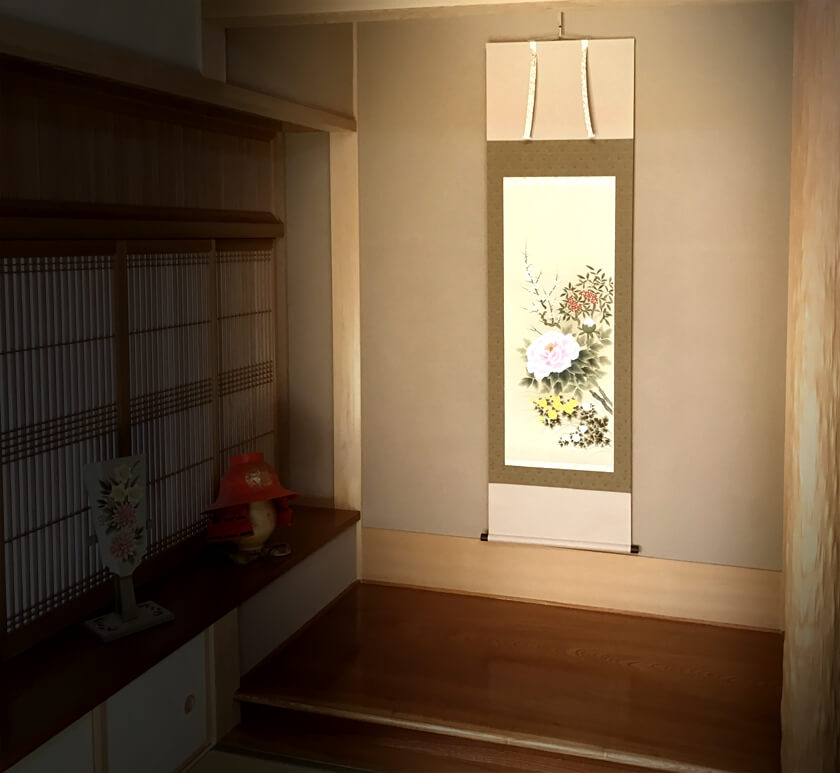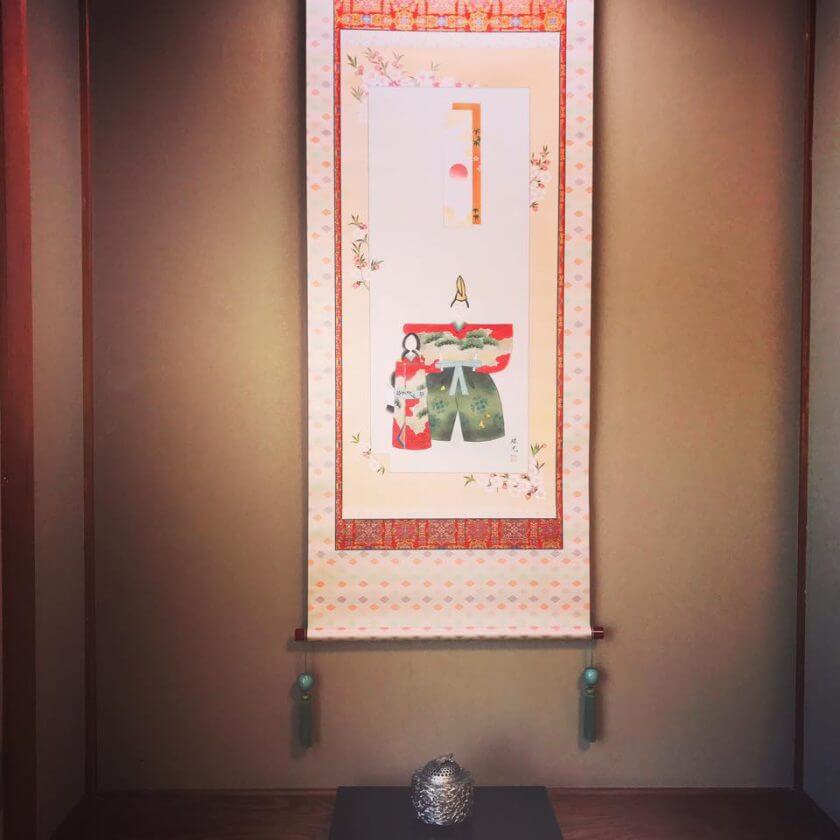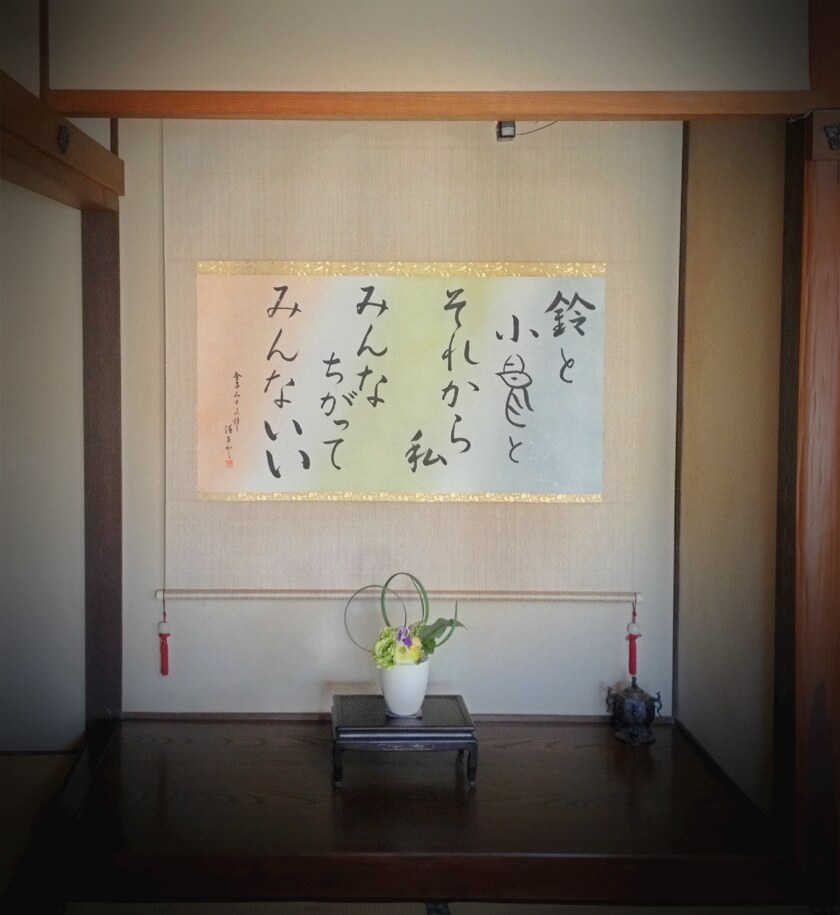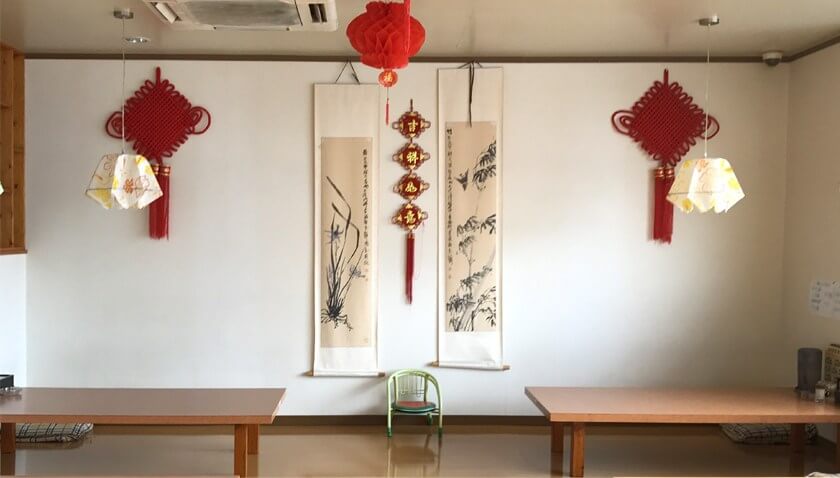Tokonoma Album 005: Gautama Leaving a Mountain, Flowers of Each Season, etc
Contents
Tokonoma & Kakejiku Scroll: Gautama Leaving a Mountain

When Gautama was twenty nine years old, he went to seclude himself in a mountain for training. He had practiced a form of asceticism in order to attain enlightenment for six or seven years.
Although the rigourousness of training was beyond description, he couldn’t attain enlightenment. Finally he left the mountain.
In the above work Gautama is depicted leaving the mountain.
Tokonoma & Kakejiku Scroll: Flowers of Each Season

“Shikibana” means four flowers, each representing one of the four seasons. Shikibana is one of the subjects of the usual kakejiku. Although there is no special rule, a peony, which is considered the king of flowers in China, is usually positioned in the middle of the screen, with the other flowers encircling it.
Tokonoma & Kakejiku Scroll: Tachibina Doll in a Standing Pose

“Hina-matsuri” (The Japanese Doll Festival) is an annual event. It is a seasonal festival to pray for the healthy growth of girls. In Japan, Hina-matsuri used to be observed on March 3, of the old calendar (around present-day April). It was on the first day of March ,the Snake month, according to the Japanese lunar-solar calendar. However, after the calendar reform of January 1, 1873, the festival has generally been celebrated on March 3, according to the Gregorian calendar (or new calendar). However, in some parts of Japan, mainly snowy regions such as the “Tōhoku” region, Hina-matsuri is still observed on March 3rd of the old calendar. There are other regions that celebrate the festival on April 3rd, in line with the new calendar. Hina-matsuri was also named “Momo-no-(peach’s) sekku” because the festival, under the old calendar, was held when peach trees blossomed.
Hina-matsuri is a seasonal festival in which dolls are displayed, and centering around two dolls representing the emperor, called “obina,” and the empress, called “mebina.” The display is decorated with peach flowers, and people enjoy eating, and drinking “shirozake” (sweet white sake). During the Edo period, the girls’ “doll play” was combined with the “ceremony of the seasonal festival.” Hina-matsuri spread across the country, and dolls began to be displayed. During this period, however, in addition to the traditional aspects of the doll display, Hina-matsuri increasingly came to have a ritualistic aspect, in which the dolls suffer all of the present and future misfortunes, in the place of people. Also at this time, the Hina-matsuri doll set came to be considered one of the bride’s household articles for high-ranking females, such as the daughters of “samurai” families. As a result, the doll trend became more elegant and luxurious.
A “tachibina” doll is a hina doll in a standing pose. The kakejiku (hanging scroll) of tachibina dolls is sometimes displayed during Hina-matsuri. Moreover, the kakejiku sometimes is displayed instead of the Hina-matsuri doll set.
Tokonoma & Kakejiku Scroll: Misuzu Kaneko’s Poem

Misuzu Kaneko (April 11, 1903 – March 10, 1930) was a Japanese poet and songwriter. Her poem is written in the above work.
Tokonoma & Kakejiku Scroll: Chinese Restaurant
 This is not a tokonoma alcove but a mere wall. The white color of the mounting fabric matches with the one of wall.
This is not a tokonoma alcove but a mere wall. The white color of the mounting fabric matches with the one of wall.

